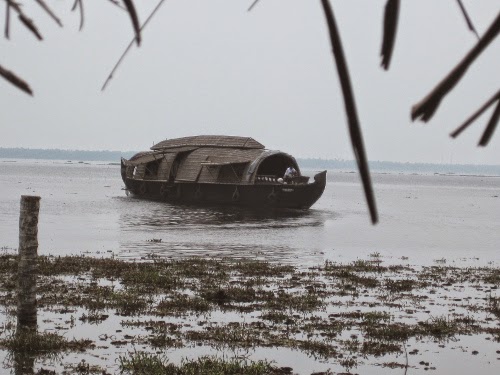The dhobi is an essential to any trip to India. If you do not want to carry around a festering bag of sweaty washing, if your hotel is not the kind of place where you can hang your underwear out of the window or across the balcony, the dhobi is the answer.
Every small bank where water can be accesses is home to a variety of washing operations which vary in scale and scope, but all result in washing being hung across makeshift lines or bushes. Some rivers display kilometres of fabric bleaching in the sun and most hotels, where the washing machine has not yet become standard and the electricity is flaky, have their favoured dhobi. It is a great pleasure to receive a package of clean laundry meticulously ironed and carefully stacked.
Not so pleasant is the package which has been bashed to death on a stone without regard for the delicacy of the fabrics and packed whilst damp, so that all the colours have run. The occasional mud splodge and stray leaf reveal the location of the particular washing hole.
That the dhobi has been under threat for a long time is spelt out in this article from 2003, written by Tanya Abraham, who is working to keep the history of Cochin alive.
http://www.thehindu.com/thehindu/mp/2003/07/07/stories/2003070700750100.htm
There is still a dhobi in the town and there are many pictures of it online.
I am sure that the modern dhobi does little for the health of the rivers as soap is often used. It probably comes under the heading of customs which will soon disappear as much needed sanitation and water supply come to India, but I can't help hoping shamefully that some of the picturesque will survive..
Update, 2015
Every small bank where water can be accesses is home to a variety of washing operations which vary in scale and scope, but all result in washing being hung across makeshift lines or bushes. Some rivers display kilometres of fabric bleaching in the sun and most hotels, where the washing machine has not yet become standard and the electricity is flaky, have their favoured dhobi. It is a great pleasure to receive a package of clean laundry meticulously ironed and carefully stacked.
Not so pleasant is the package which has been bashed to death on a stone without regard for the delicacy of the fabrics and packed whilst damp, so that all the colours have run. The occasional mud splodge and stray leaf reveal the location of the particular washing hole.
That the dhobi has been under threat for a long time is spelt out in this article from 2003, written by Tanya Abraham, who is working to keep the history of Cochin alive.
http://www.thehindu.com/thehindu/mp/2003/07/07/stories/2003070700750100.htm
There is still a dhobi in the town and there are many pictures of it online.
I am sure that the modern dhobi does little for the health of the rivers as soap is often used. It probably comes under the heading of customs which will soon disappear as much needed sanitation and water supply come to India, but I can't help hoping shamefully that some of the picturesque will survive..
 |
| The laundry cart, Thekkady |
 |
| The dhobi inside the wildlife reserve, Periyar |
The reason there are so many pictures of the dhobi khana in Cochin online is that it has reinvented itself as a tourist facility. Right on, Fort Cochi!




